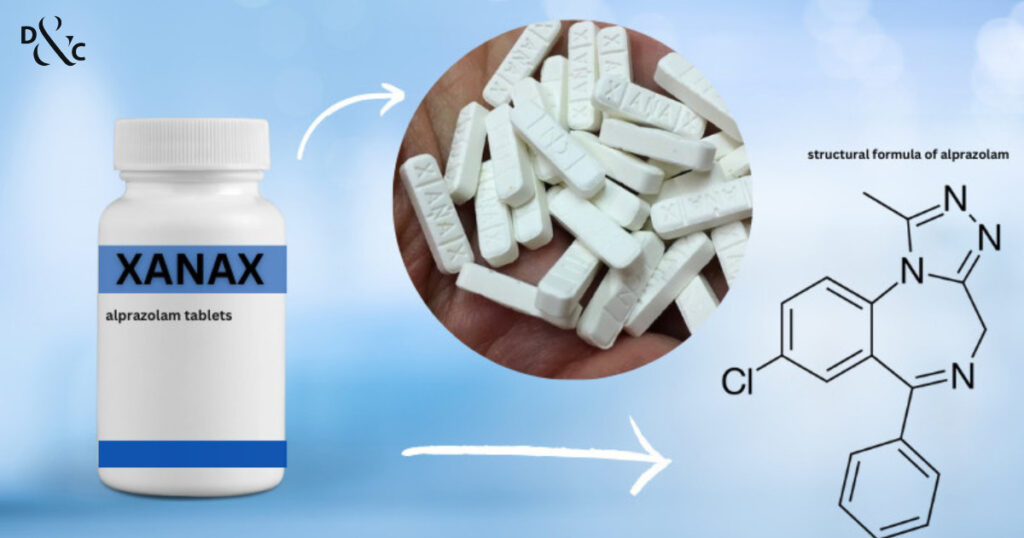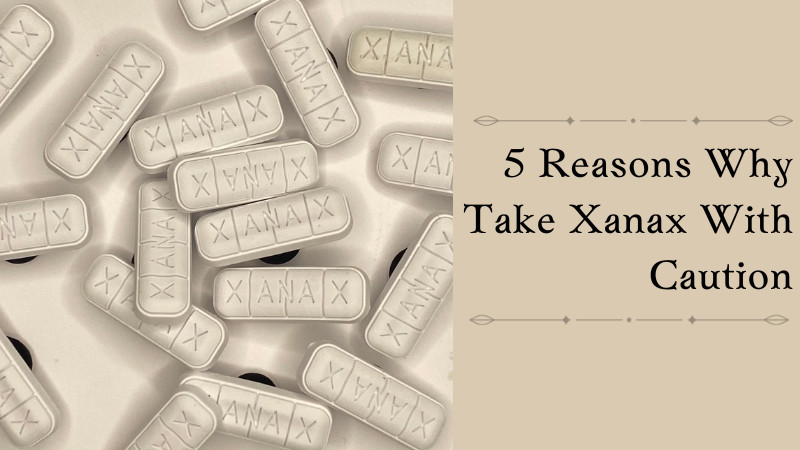In the realm of relaxation and sleep aids, two names often rise above the rest. One, a gift from nature, has been a trusted ally for centuries, offering solace to those restless at night. The other, a product of modern medicine, provides swift relief to those grappling with anxiety and sleeplessness. Yes, we’re talking Valerian Root vs Xanax.
The comparison between the two is more than just ancient versus modern, or base-level natural versus synthetic; it’s a deep dive into the essence of holistic wellness versus clinical solutions.
As we navigate the intricate pathways of the Valerian Root vs Xanax discussion we aim to shed light on their unique attributes, guiding you towards an informed choice.
Join us on this enlightening expedition, and discover which might be the best fit for attaining your utopian tranquillity.
Table of Contents
Xanax
Benzodiazepine, commonly referred to as “Xanax,” is a medication utilised to treat depression, anxiety and panic disorders by regulating the brain’s chemical levels. It belongs to the class of drugs known as benzodiazepines. 1
Xanax enhances the levels of neurotransmitters in the brain, aiding in relaxation and promoting a sense of calm. When taken as prescribed, it is generally considered to be both safe and effective. By moderating the activity of certain brain chemicals that might be imbalanced, it can alleviate symptoms of tension and anxiety. But this does not come without the potential for inherent risks. 2
Sleep Aids and Sedatives; What Goes into Products like Xanax?
Xanax contains alprazolam, a compound from the 1,4 benzodiazepine class that affects the central nervous system. This substance is a white crystalline powder and is soluble in both methanol and ethanol. 3

Uses of Xanax
Since Xanax contains Alprazolam, it’s primarily used in:
- Generalised Anxiety Disorder (GAD): It helps reduce excessive worry and anxiety that lasts six months or longer. 4
- Panic Disorder: It treats panic attacks or episodes of intense fear that come on quickly and last minutes to hours.
Xanax acts by boosting the actions of particular neurotransmitters in the brain, resulting in a serene and peaceful mental and physical state.
5 Side Effects of Xanax
Benzodiazepines, including Xanax, are among the most commonly prescribed medications globally. While they offer relief for symptoms like anxiety and panic disorder, their use is often not supported by medical studies, leading to potential misuse and associated risks.

These 5 side effects require consideration, so let’s evaluate how these may affect our body.
Side Effect 1: Dependency and Withdrawal
When a person is dependent on Xanax, they are at a high risk of experiencing withdrawal symptoms if they reduce their dosage or stop taking the medication all of a sudden.
Withdrawal from Xanax can manifest in severe symptoms such as sweating, rapid pulse, hand tremors, insomnia, anxiety, nausea, vomiting, restlessness, hallucinations, and seizures.
The onset and severity of these symptoms can vary based on factors like the frequency of use, dosage, duration of use, concurrent use of other substances, and individual health conditions. 5
Side Effect 2: Cognitive Impairment
In males, chronic intake of Xanax (alprazolam) has been found to lead to significant impairment in certain aspects of visual memory. However, while memory was affected, the drug did not significantly impact attention or psychomotor performance.
In essence, Xanax can cause cognitive impairment, particularly in visual memory, but its effects on attention and psychomotor skills appear to be minimal. 6
In general, while those who take the medication as prescribed can manage these memory issues, individuals addicted to Xanax face a heightened risk of severe memory problems
Continuous misuse or addiction can result in lasting cognitive impairment, particularly in memory functions. 7
Side Effect 3: Motor Impairment
J. Verster, et al., concluded in their study that Xanax notably impaired driving skills, as evidenced by increased deviations in lateral position and speed during a driving test.
The Researcher’s participants also communicated that they felt less alert and believed their driving quality diminished after taking the drug.
They also found that alprazolam negatively impacted memory and psychomotor tests, underscoring the risks of driving or using machinery post-consumption. 8
Side Effect 4: Weight Fluctuations
Xanax can influence weight fluctuations in users. Some individuals may experience weight gain due to increased appetite or water retention, while others might lose weight because of nausea or a decreased appetite.
Additionally, it can lead to fatigue, potentially reducing physical activity, which can contribute to weight gain.
However, it’s essential to note that everyone’s body reacts differently, and not all Xanax users will experience these weight changes. 9
Side Effect 5: Drowsiness
Xanax has a sedative effect that slows down brain activity, leading to one of its common side effects: drowsiness.
This drowsiness can be particularly pronounced if taken during the day, potentially making activities requiring alertness, such as driving, or engaging in hazardous activity. The sensation of feeling “woozy” or lightheaded is also related to this effect.
Combining alprazolam with other substances like alcohol can intensify this drowsiness. Users must be aware of this side effect and exercise caution, especially when engaging in activities that demand focus and coordination. 10
Xanax, while effective for its intended uses, clearly comes with a range of potential side effects that users should be aware of. As with any medication, it’s essential to consult with a healthcare professional to ensure its safe and appropriate use for your circumstances.
As our conversation transitions from the modern medicine of Xanax to the ancient Valerian Root, let’s take some time to explore the historical and modern-day uses of this natural wonder. In the interests of objectivity, we will delve into how both substances, Valerian root and Xanax, impact the liver.
Valerian Root: A Natural Alternative
Valerian root, scientifically known as Valeriana officinalis, has a long-standing history of medicinal use. Historically, valerian has been utilised for various ailments, including sleep disorders, anxiety, and gastrointestinal pain. 11

In ancient Greece and Rome, it was prescribed for insomnia and was even used as a remedy during wartime due to its calming properties.
In modern times, valerian root is primarily recognised for its potential sedative effects and is commonly used as a natural remedy for sleep disorders and anxiety. Its popularity in contemporary herbal medicine is evident, with many people seeking it as an alternative to pharmaceutical treatments. 12
Are you curious about the wonders of Valerian Root? Dive into our article where we consider the question ‘What’s Valerian Root Good For‘? Here, we will uncover six astonishing health benefits of this powerful herb. Don’t miss out on the secrets of nature’s potent remedy!
Valerian Root vs Xanax: How it Affects the Liver
Is Valerian Root Safe for the Liver?
Valerian root (Valeriana officinalis) has been traditionally used for various conditions such as nervousness, trembling, and headaches, and in modern times, it’s commonly used to improve sleep, reduce sleeplessness, alleviate mild anxiety, and address menopause symptoms.
However, there have been concerns regarding its potential effects on the liver. The Therapeutic Goods Administration (TGA) has been investigating the safety of Valerian following reports of liver injury.
Since 1983, the TGA received 15 reports of liver injury in consumers taking products containing Valeriana officinalis. 13
In some of these cases, Valeriana officinalis was the only ingredient, and in others, the other ingredients were considered unlikely to cause liver injury. Most liver damage cases are resolved after discontinuing the use of Valeriana officinalis. Some cases were severe enough to require hospitalisation.
Additionally, the National Institutes of Health (NIH) has noted that Valerian can cause liver damage, although such cases are rare. 14
Is Xanax Safe for the Liver?
Xanax (Alprazolam) is metabolised by the liver, and prolonged use or abuse of the drug can strain and potentially damage the liver. Symptoms of liver damage from Xanax may include:
- Jaundice (yellowing of the skin and eyes) 15
- Abdominal pain and swelling 16
- Itchy skin
- Dark urine colour
- Chronic fatigue, and
- Pale stool colour
Combining Xanax with alcohol can further exacerbate liver strain, increasing the risk of liver disease and damage.
It’s essential to use Xanax as prescribed and be aware of the potential risks to liver health, especially if consumed with alcohol or other substances that are metabolised by the liver.
Valerian Medications Changed by the Liver Cytochrome P450
The liver’s cytochrome P450 enzyme system, often abbreviated as CYP450, is a group of enzymes responsible for metabolising many drugs and toxins in the body. This system plays a crucial role in determining how drugs are processed, their effectiveness, and potential side effects. 17
Valerian root’s potential interaction with the CYP450 system is of particular interest. According to WebMD, it might increase the speed at which the liver breaks down certain medications through the CYP450 system, potentially diminishing their effectiveness.
However, K. Yokotani, et. al, suggest that the plant did not have a significant impact on these liver enzymes in their study. These findings highlight the importance of understanding potential interactions between herbal remedies like valerian and the CYP450 system. 18
It’s always recommended for individuals to consult with healthcare professionals before combining valerian with other medications.
Interactions of Valerian with Other Medications
If you are wondering ‘Can I take valerian?’ or ‘Does valerian root work with other medications?’ these are questions to seek specialist advice for. The scope of these types of questions is at the very least expansive, and their factors are very personal.
In the interests of supporting informed conversation, the following may prove to be a good starting point for you to consider before having such a conversation.
Interacts with Valerian Medications Changed
Valerian root is known to interact with various medications due to its influence on the liver’s cytochrome P450 enzyme system. The cytochrome P450 system is responsible for metabolising many drugs in the body. When valerian root is consumed, it can either inhibit or induce certain enzymes in this system, which can lead to altered levels of medications in the blood.

CYP3A4, CYP2D6, CYP2E1, and CYP1A2 Substrates Interacts with Valerian
Specifically, valerian root can interact with drugs that are substrates of the CYP3A4, CYP2D6, CYP2E1, and CYP1A2, these are specific enzymes within the liver’s cytochrome P450 system, responsible for metabolising a wide range of drugs and toxins in the body. 19
This means that medications metabolised by these enzymes can have their concentrations affected when taken alongside valerian root.
For instance, drugs like Lovastatin (a cholesterol-lowering medication), Triazolam (a sedative), and Ketoconazole (an antifungal medication) are metabolised by CYP3A4 and can have altered blood levels when taken with valerian.
It is worth noting that valerian root can also interact with medications that depress the central nervous system, enhancing their sedative effects. This can lead to increased drowsiness and slowed reflexes, which can be dangerous, especially when driving or operating heavy machinery.
FAQs
Is Valerian root like Xanax?
No, valerian root and Xanax are not the same; while both can have sedative effects, Xanax is a prescription medication used to treat anxiety and panic disorders, whereas valerian root is a natural herbal remedy often used for sleep disorders and anxiety.
Is Valerian root like a Benzo?
No, valerian root is not benzo; however, both are used for their sedative effects on the central nervous system.
Is valerian root safer than Xanax?
Valerian root is a natural remedy often used for sleep and anxiety, while Xanax is a prescription medication with potential side effects and risks of dependency.
While valerian root is generally considered safe for most people, it’s essential to consult with a healthcare professional before choosing between the two, as individual needs and reactions can vary.
Does Valerian stop panic attacks?
No, valerian root is primarily used for sleep disorders and anxiety, but there is no conclusive evidence to suggest it can stop panic attacks.
What is a natural Xanax equivalent?
Natural alternatives to Xanax, based on the article ‘Safer Xanax Alternatives – Looking for a Better Way?’ these may include: 20
1. Niacinamide – A vitamin with anti-anxiety effects.
2. Magnesium – A mineral that helps regulate mood-related pathways.
3. CBD (Cannabidiol) – Used for anxiety and depression without oversedation effects.
4. Melatonin – Aids sleep, which can indirectly help manage anxiety.
5. Tryptophan, 5-HTP – Precursors to serotonin, aiding in mood regulation.
6. Omega-3 Fatty Acids – Found in fish and seeds, they can decrease anxiety.
7. Valerian – An herb known to reduce anxiety and insomnia.
8. Counselling – Techniques like CBT offer long-lasting anxiety relief.
9. Art Therapy – A creative way to express and manage emotions.
10. Equine Therapy – Interacting with horses to boost confidence and process feelings.
Always seek advice from a medical expert before exploring new therapies.
What herb is closest to Xanax?
Valerian root is often considered the herb closest to Xanax due to its sedative properties and use in treating anxiety and insomnia.
What is the closest supplement to Xanax?
The closest natural supplement to Xanax in terms of its calming effects is a valerian root extract, often taken in capsule or tincture form for anxiety and sleep disorders.
What herbs are as strong as Xanax?
Several herbs are believed to have calming effects similar to Xanax, including valerian root, kava kava, passionflower, and lemon balm; however, their efficacy and safety profiles may vary, and they are not considered direct replacements for prescription medications.
What is better than Xanax?
Natural alternatives to Xanax for anxiety and stress relief include valerian root, chamomile, passionflower, lavender, and lemon balm.
Is lavender as effective as Xanax?
No, lavender is not as effective as Xanax; while lavender may have calming properties and can help with mild anxiety, Xanax is a prescription medication specifically designed to treat anxiety and panic disorders.
What essential oils act like Xanax?
Several essential oils have calming properties similar to Xanax, including lavender, chamomile, bergamot, and valerian root oil.
What is the strongest anti-anxiety herb?
The strongest anti-anxiety herb is often considered to be valerian root, known for its sedative properties and effectiveness in treating anxiety and sleep disorders.
Can you take Xanax and Valerian together?
It’s not recommended to take Xanax and Valerian together without consulting a healthcare professional, as both can have sedative effects and may enhance each other’s drowsiness, potentially leading to excessive sedation.
Does Xanax increase serotonin?
Benzodiazepines are multifaceted medications that influence neurotransmitters such as serotonin and GABA. They elevate levels of serotonin and dopamine while also boosting GABA function.
As serotonin and dopamine are dominant “feel-good” compounds produced by the body, their enhancement can lead to profound relaxation and euphoria, especially when the drug is misused or abused
What is the best calming tea for anxiety?
Chamomile and lavender teas are renowned for alleviating anxiety, while catnip and passionflower teas, primarily recognised for enhancing sleep quality, can also assist in reducing anxiety. Tea? Try and sip our HerbiTea to feel the soothing effect in your body.
Are there natural benzodiazepines?
Yes, there is accumulating evidence that benzodiazepines (BZD) have been found in trace amounts in plants, various animal tissues, and even humans, suggesting the presence of “natural” benzodiazepines.
According to U. Klotz, the exact source and biosynthesis of these natural BZD are still unknown, and their physiological/biological role remains speculative. These trace amounts are unlikely to exert direct pharmacological effects. 21
What herbs cannot be taken with Xanax?
You should not take Xanax (alprazolam) with herbs that have sedative effects, such as:
1. Valerian root
2. Kava
3. St. John’s Wort
4. Chamomile, and
5. Lavender
Combining Xanax with these herbs can increase the risk of excessive sedation and potentially dangerous side effects. Always consult a healthcare professional before combining any medication with herbs or supplements.
Can I take Ashwagandha with Xanax?
It is not recommended to take Ashwagandha with Xanax. Mixing them can potentially lead to increased sedation and drowsiness, which may be unsafe
Are Valium and Xanax the same?
Valium and Xanax are not the same; they are distinct medications used primarily to treat anxiety and panic disorders.
Both Xanax and Valium belong to a class of drugs known as benzodiazepines, which work by enhancing the effect of a neurotransmitter called gamma-aminobutyric acid (GABA) to induce a calming effect on the brain.
Valium (diazepam) tends to have a longer duration of action compared to Xanax (alprazolam), which is more potent but has a shorter duration of action.
Conclusion
In the comparison between Valerian Root and Xanax, it’s evident that both have their merits in treating anxiety and sleep disorders.
However, when considering Xanax, it’s crucial to approach it with caution. While Xanax offers rapid relief from anxiety symptoms, it comes with potential side effects, interactions with other medications, and concerns about dependency and withdrawal.
On the other hand, Valerian Root offers a natural alternative with fewer side effects, but its efficacy might vary among individuals.
In making an informed decision, it’s essential to weigh the benefits against the risks, and always consult with a healthcare professional before starting or changing any medication or supplement.
We’d love to hear your thoughts and experiences on Valerian root vs Xanax. Join the conversation on our Pinterest and Instagram, and let’s delve deeper into this discussion together!
References
- “Benzodiazepines Drug Class” – A. Ogbru, Last checked 20 September 2023 [RX List] [Archive] ↩︎
- “Benzodiazepines, when to prescribe” – SA Health Staff, Last checked 20 September 2023 [Government of South Australia Health] [Archive] ↩︎
- “Xanax: alprazolam tablets” – FDA Staff, Last checked 20 September 2023 [Food and Drug Administration] [Archive] ↩︎
- “Alprazolam” – T. George, J.Tripp, Last checked 20 September 2023 [National Library of Medicine] [Archive] ↩︎
- “Detoxing From Xanax” – L. Geoffrion, Last checked 20 September 2023[Oxford Treatment Center] [Archive] ↩︎
- “The Effect of Chronic Alprazolam Intake on Memory, Attention, and Psychomotor Performance in Healthy Human Male Volunteers” – Z. Chowdhury, M. Morshed, M. Shahriar, M. Bhuiyan, S. Islam, M. Sayeed, 4 July 2016 [PubMed Central] [Archive] ↩︎
- “Could a Xanax Addiction Cause Memory Loss?” – MRC Staff, Last checked 20 September 2023 [Memphis Recovery Centers] [Archive] ↩︎
- “Effects of Alprazolam on Driving Ability, Memory Functioning and Psychomotor Performance: A Randomized, Placebo-controlled Study” – J. Verster, E. Volkerts, M. Verbaten, 14 February 2002 [Springer Nature] [Archive] ↩︎
- “Does Xanax Cause Weight Gain?” – C. Osario, 3 June 2022 [Choosing Therapy] [Archive] ↩︎
- “9 Alprazolam Side Effects You Should Know About” – A. Ulrich, 22 March 2023 [GoodRx Health] [Archive] ↩︎
- “Valerian – Uses, Side Effects, and More” – WebMD Staff, Last checked 20 September 2023 [Web MD] [Archive] ↩︎
- “Valerian” – NCCIH Staff, Last checked 20 September 2023 [National Center for Complementary and Integrative Health] [Archive] ↩︎
- “Valerian (Valeriana officinalis)” – TGA Staff, 15 October 2020 [Therapeutic Goods Administration] [Archive] ↩︎
- “LiverTox: Clinical and Research Information on Drug-Induced Liver Injury – Valerian” – NIH Staff, Last checked 20 September 2023 [National Library of Medicine] [Archive] ↩︎
- “Is Xanax Bad For Your Liver?” – HealthMatch Staff, Last checked 20 September 2023 [HealthMatch] [Archive] ↩︎
- “Is Xanax Bad for Your Liver?” – A. Valentin, 1 March 2022 [Clearbook Treatment Centers] [Archive] ↩︎
- “Basic Review of the Cytochrome P450 System” – A. McDonnell, C. Dang, 1 July 2023 [PubMed Central] [Archive] ↩︎
- “Effect of three herbal extracts on cytochrome P450 and possibility of interaction with drugs” – K. Yokotani, T. Chiba, Y. Sato, T. Nakanishi, M. Murata, K. Umegaki, Last checked 20 September 2023 [PubMed] [Archive] ↩︎
- “Valerian: No Evidence for Clinically Relevant Interactions” – O. Kelber, K. Nieber, K. Kraft, 30 June 2014 [PubMed Central] [Archive] ↩︎
- “Safer Xanax Alternatives – Looking for a Better Way?” – D. Ridaeus, 20 April 2023 [Alternative to Meds Center] [Archive] ↩︎
- “Occurrence of “natural” benzodiazepines” – U. Klotz, Last checked 20 September 2023 [PubMed] [Archive] ↩︎
Last Updated on 5 months by D&C Editorial Team




